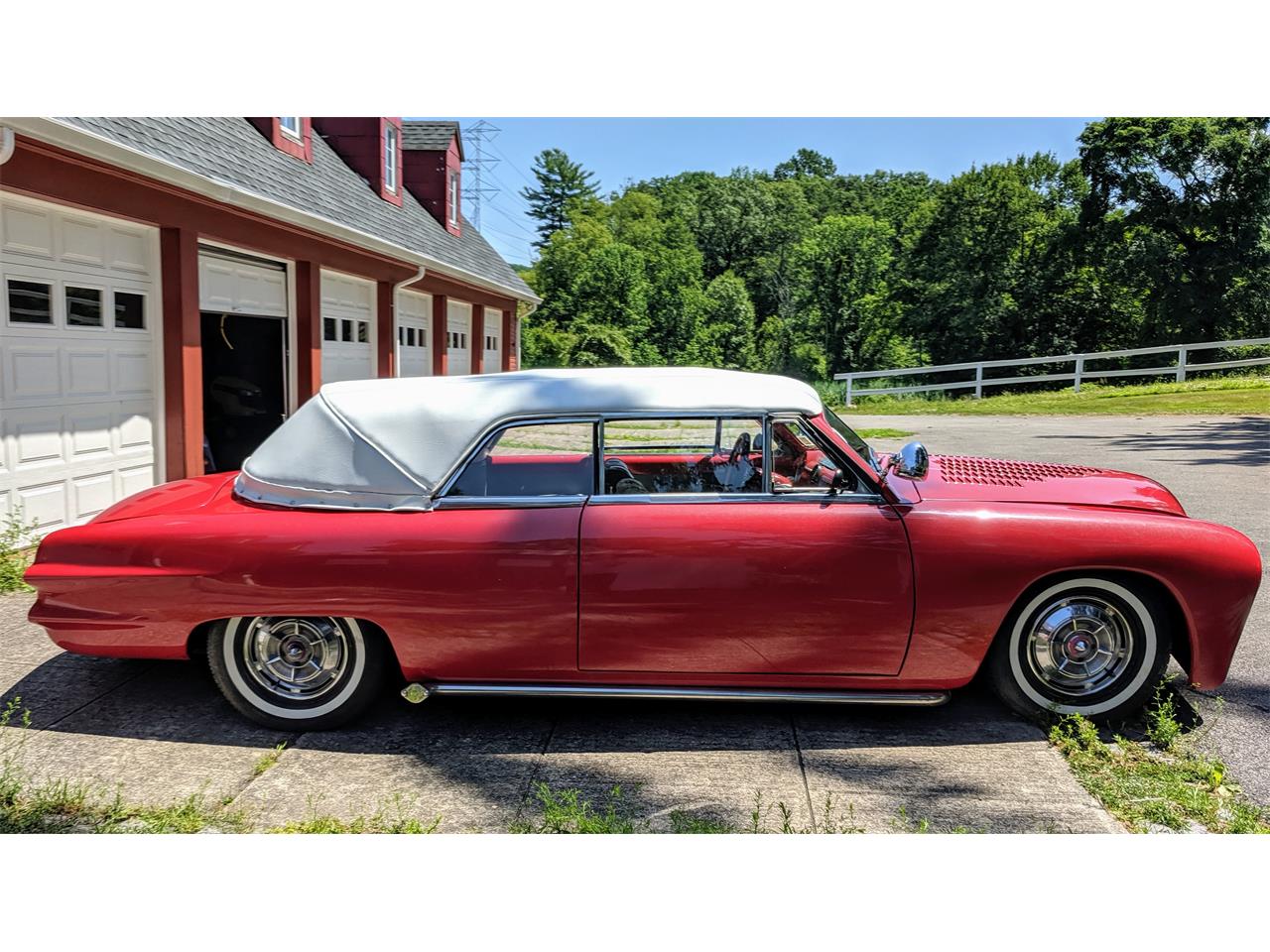

One look and one listen will tell you, this isn’t your Grandpa’s old Ford. The engine sounds great when you push it a bit, but idles quietly on request.

Pop the hood, and fully chromed 100 HP Flathead V-8 gleams like jewelry, with a modern alternator and Optima Red Top battery already in place.
1950 FORD CONV FULL
The vehicle still has the factory tools, a full sized spare, and custom floormats.

The new interior includes tuck and roll seats, door panels, and a matching parade boot, and features a Factory Magic Heater, Sun Pro water temperature gauge, and a Sony CD player tucked in the glove box. Look inside, and a completely new white interior lets you know that this slight custom was done with no expense spared. The car just looks right riding on the stock painted wheels, 15” factory hubcaps, and new Coker Classic Wide Whitewall radials. The chrome and glass are both excellent, as is the extensive stainless trim. Visually, from the outside, it looks bone stock, with nice straight panels and a fine finish, and even the factory rear wheel skirts. It needs nothing to take to a local event or cruise for the weekend, and the flathead starts easily, shifts smoothly, and the car stops just like it should. With just under 8,000 miles since, this old Ford is still extremely clean and obviously nicely cared for. This beautiful red Ford convertible was the favorite piece of a local Texas collector’s stable, and he spared no expense making her perfect, spending almost $150K to restore and customize the car several years ago.
1950 FORD CONV MANUAL
A manual three-speed transmission was standard and overdrive was optional. Power was supplied by Ford’s 239 cubic-inch V8 engine that produced 100 horsepower. Base price of the Custom Deluxe convertible was $1,950 without options. The Custom Deluxe V8 series featured the top trim level for Ford, including chrome window trim, chrome horn ring, dual sun visors, armrests on all doors and deluxe chrome trim along the lower half of the body. They turned to designer George Walter, commonly known as the ‘Cellini of Chrome’ for a sleek new streamlined design to take them into the 50’s, and the Ford brand was off and running again. Henry Ford’s persistence on updating the antiquated suspension system had been another factor, and as the war came to an end, the Ford Motor Company emerged in declining financial health. Their troubles began during the 1930s, as the Great Depression and increasing competition had slowed some of the company’s success. Most had been updates of pre-war cars, and with demand high, Ford had to respond. It took a few years after World War II for automakers to introduce completely new postwar era cars.


 0 kommentar(er)
0 kommentar(er)
